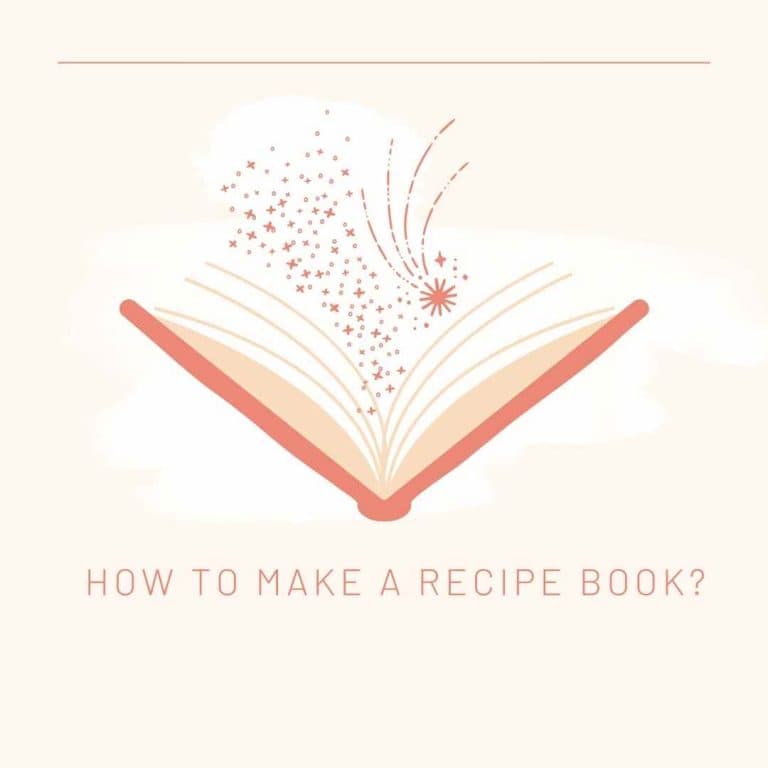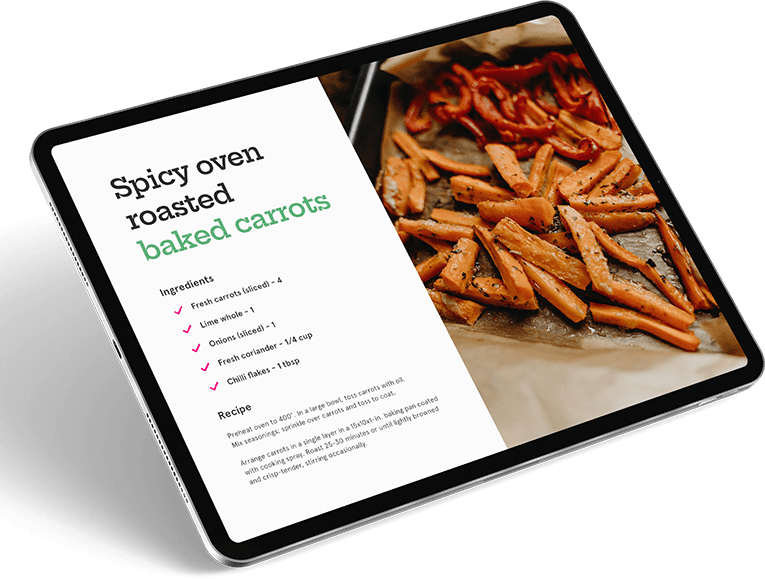If you’ve ever dreamt of sharing your favorite recipes, cherished culinary experiences, or unique concoctions with the world, a recipe book should be your next project.
Your kitchen has been your sanctuary, a haven for creativity, and your recipes deserve to be immortalized!
In this culinary adventure, we’ll guide you through the delightful process of how to make a recipe book. So, roll up your sleeves and put on your apron because we’re about to embark on a journey that will satisfy your taste buds and fulfill your creative aspirations!
Table of Contents
ToggleWhy Make a Recipe Book?
A recipe book, often referred to as a cookbook, is a compilation of culinary recipes, typically organized according to various categories like course (appetizers, main meals, desserts), dietary preferences (vegetarian, gluten-free, low-carb), or cuisine (Italian, Chinese, Mediterranean).
It serves as a reference guide for cooking, packed with detailed instructions, ingredient lists, and, often, beautiful images of the finished dishes.
Creating a recipe book serves as a beautiful testament to your gastronomic journey. Your cookbook is not simply a compilation of recipes; it’s a narrative of your culinary experiments, experiences, and memories, imbued with the flavors and aromas that have brought joy to you and your loved ones.
Moreover, curating a recipe book allows you to preserve your unique recipes for future generations, giving them a chance to recreate and relish the same experiences you have cherished.
It can inspire others, ignite their passion for cooking, and encourage them to embark on culinary adventures!
Are you ready to learn how to make a recipe book?
Let’s dive into the process!
Step 1: Brainstorming
Before you start chopping onions or whisking eggs, it’s essential to put on your thinking cap and lay the groundwork for your recipe book.
Identify Your Purpose
First and foremost, ask yourself why you want to create a recipe book. Is it to preserve family traditions, share your culinary innovations, or even turn your passion into a profit? Identifying your purpose will guide you through the process. Remember, no answer is wrong! Your motivation is what matters.
Think About Your Target Audience
Next, consider the audience you want your recipe book to reach. Will it be for beginners looking to learn new recipes or seasoned cooks searching for creative inspiration? Knowing your target audience can help shape the tone and style of your book.
Digital or Printed
Next, decide whether to create a digital recipe book, a printed version, or both. Digital books are accessible to a wide audience, while printed books offer a tangible, timeless charm. Your choice depends on your audience and personal preferences.
Choose a Theme
Your recipe book should tell a story. Choose a theme that resonates with you and your audience. Whether it’s classic comfort foods, healthy eating, international cuisines, or something unique, a piece will give your book direction and coherence.
Step 2: Preparation
With your ideas firmly in place, let’s get cooking — metaphorically, at least!
Select Your Recipes
Now comes the fun part — selecting the recipes that will grace the pages of your book. Pick dishes that represent your culinary style and resonate with your theme. Include a mix of appetizers, mains, desserts, and beverages to cater to diverse tastes and situations.
Organize Your Chosen Recipes
Organization is key to a successful recipe book. Categorize your recipes logically, whether by course, cuisine, or occasion. Create a table of contents that allows readers to navigate the book easily and find the recipes they’re looking for without flipping through the entire book.
Step 3: Test Your Recipes
Before you include a recipe in your book, it’s essential to ensure its accuracy and feasibility. This stage is all about testing your chosen recipes.
Cook Up a Storm!
Gather the necessary ingredients and cook your chosen dishes, taking note of all the steps and measurements. Not only will this help you refine your recipes, but it will also allow you to take mouth-watering photos for your book.
Make Necessary Adjustments
As you test your recipes, keep a keen eye out for any discrepancies or adjustments you need to make. Perhaps you must change a measurement or substitute an ingredient for a more accessible option. It’s vital to perfect each recipe before including it in your book.
Finalize Your Recipes
After multiple rounds of testing and adjustments, your recipes should be ready for the final stage. Gather the last versions of each recipe and double-check them for any errors or inconsistencies.
Step 4: Designing and Formatting
Once you have your final recipes lined up, it’s time to add the spice of creativity to your project.
Take Photos
Your mantra should be “food that looks as good as it tastes.” Invest time in capturing enticing food photography that makes your readers salivate at the sight of your dishes! This step will require good lighting, a camera or smartphone with high-quality resolution, and patience.
Think Through the Layout
Consider the layout of your recipe book. How will you present your recipes? Will you include step-by-step photos or stick to a clean, minimalist design? Think about font styles, colors, and overall aesthetics that align with your theme.
Check the Overall Design
While design is crucial, simplicity can be your best friend. Ensure that your book is easy to read and visually appealing. Test the layout with sample recipes to see how everything comes together. The details can make or break the reading experience.
Step 5: Writing, Editing, and Publishing
With your recipes, photos, and design ready, it’s time to tie up loose ends and prepare for publication.
Write, Write, Write
Avoid using vague language or complicated instructions that may confuse readers. Be precise and descriptive so your readers can easily replicate the dishes.
Also, remember the pages before and after the main section of recipes, such as an introduction, a foreword, or acknowledgments. Feel free to include stories or anecdotes about the recipes to add a personal touch.
Proofread Your Recipe Book
Nothing spoils the taste of a well-prepared meal like a recipe book filled with typos and errors. Double-check every ingredient list, cooking instruction, and page number. Enlist the help of a friend or hire a professional editor if needed.
Ensure Licensing
Know the importance of proper licensing. Make sure you have the necessary licenses for any external content, and remember to properly license the use of our recipe and food photography if you decide to incorporate them into your book. It’s not only good practice but also essential for avoiding legal issues.
Publish!
Now comes the moment of truth — publish your recipe book! Whether you’re going for a printed version or a digital PDF, ensure it’s accessible to your target audience. Depending on your goals, you can self-publish or explore traditional publishing options.
KitchenBloggers Tips
Before we wrap up this culinary journey, here are some of our best KitchenBloggers tips to make your recipe book creation smoother and more enjoyable.
Use Cookbook Templates
Creating a recipe book from scratch can be a daunting task. Only some people are graphic designers or have access to one. Cookbook templates can come in handy and solve this issue.
Cookbook templates are pre-designed layouts that you can use to structure and format your recipe book. These templates often include sections for ingredients, instructions, servings, preparation time, and a dedicated area for photographs. They come in various styles to suit your personal preference or cooking theme. A cookbook template can simplify the design process significantly and ensure a professional, polished look for your recipe book.
Leverage Our Licensed Recipe and Food Photography
Besides not being a graphic designer, you may need more time or resources to create your food photography. You may also need more recipes than what you have in your collection.
On top of that, you need licensing rights to use someone else’s content in your book. KitchenBloggers offers a solution to all these problems!
Our recipe and food photography packages provide a wide range of options, ensuring you have enough material for your book.
Incorporating these stunning visuals into your recipe book will make your dishes shine and leave your readers craving more. Plus, you can license these visuals for commercial use, which is excellent for your budding culinary business.
Make It Personal
This journey is yours — it doesn’t matter if your book is for personal use or to share with others. Make it unique and add a personal touch.
Consider adding a section on why these recipes are meaningful, anecdotes about cooking disasters or successes, or even dedications to loved ones who inspired your love for cooking. Personal touches like these will make your recipe book one of a kind and special for you and your readers.
Make a Recipe Book With KitchenBloggers!
Congratulations, culinary enthusiast! You’ve successfully embarked on the journey of creating your very own recipe book. From brainstorming ideas to organizing your recipes, designing with creativity, and finally publishing your masterpiece, you’ve covered all the bases.
Remember that at KitchenBloggers, we’re here to support your culinary endeavors every step of the way.
Unleash your inner chef, craft your unique culinary story, and share it with the world. In the world of cooking and recipe creation, the possibilities are as endless as the ingredients in your pantry. Bon appétit, and happy recipe book making!
FAQs
How do I make my cookbook?
Collect your favorite recipes, organize them by categories, add personal stories or tips, design the layout using software or templates, and consider publishing options like self-publishing or through online platforms.
How do I start writing a recipe book?
Begin by selecting a theme or focus for your recipes, create a structure or outline, write detailed recipes with clear instructions, and consider adding personal touches or anecdotes.
How do I make a printable recipe book?
Use software like Adobe InDesign or Canva to design the layout, format the recipes for printing, include images if desired, and save the file in a printable format like PDF.
Do recipe books make money?
Yes, recipe books can make money through various avenues such as sales, royalties, self-publishing, or online platforms and partnerships. Success often depends on factors like uniqueness, quality, and marketing efforts.


